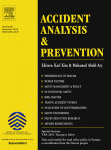
Hierarchical structures in road safety data are receiving increasing attention in the literature and multilevel (ML) models are proposed for appropriately handling the resulting dependences among the observations. However, so far no empirical synthesis exists of the actual added value of ML modelling techniques as compared to other modelling approaches. This paper summarizes the statistical and conceptual background and motivations for multilevel analyses in road safety research. It then provides a review of several ML analyses applied to aggregate and disaggregate (accident) data. In each case, the relevance of ML modelling techniques is assessed by examining whether ML model formulations (i) allow improving the fit of the model to the data, (ii) allow identifying and explaining random variation at specific levels of the hierarchy considered, and (iii) yield different (more correct) conclusions than single-level model formulations with respect to the significance of the parameter estimates. The evidence reviewed offers different conclusions depending on whether the analysis concerns aggregate data or disaggregate data. In the first case, the application of ML analysis techniques appears straightforward and relevant. The studies based on disaggregate accident data, on the other hand, offer mixed findings: computational problems can be encountered, and ML applications are not systematically necessary. The general recommendation concerning disaggregate accident data is to proceed to a preliminary investigation of the necessity of ML analyses and of the additional information to be expected from their application.
| ID | pj80 |
| Manuscript | |
| DOI | |
| Tags | statistical modelling |













